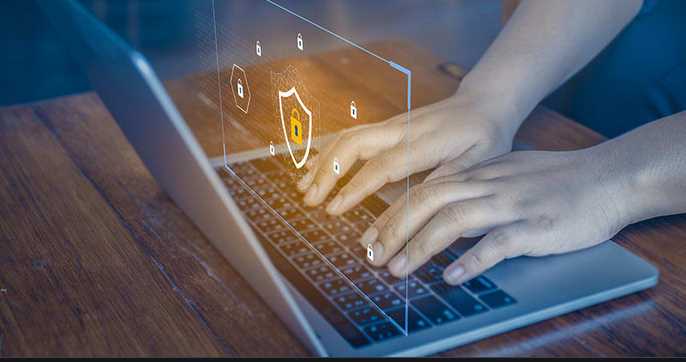Organizations have doubled up their cybersecurity investments, especially in the recent past. The reason for this is that cybersecurity threats are costing organizations an arm and a leg. Hackers leave their victims paralyzed and on the brink of shutting their business doors. As a result, businesses, organizations, and governments are racing against time to keep up with the ever-evolving cybersecurity landscape.
As Guevara Noubir says, “With every wave of new technology, there’s a new wave of possibilities for adversity,” As we embrace technological advancements, let us also take note of the evolving cybersecurity risks. And with the Covid-19 situation, things have taken a new twist as the world has witnessed an increase in covid-19 related cybersecurity attacks. As a result, organizations should be aware of the potential threats and solutions to deal with the threats. This article will help you discover some of the cybersecurity trends you should watch in 2021 and beyond.
- Increased Interest in Data Privacy
The 2017 Equifax Data Breach is one perfect example that shows you how devastating data breaches have become. High-profile data breaches have exposed millions of sensitive data. The concern about the safety of data has now been increasing. In 2021, data privacy will no longer be a single element of the cybersecurity framework. Instead, it will be a program on its own.
The increasing data security breaches have put individuals, organizations, and governments on their toes to try and find viable measures that can help them safeguard data. Installing an SSL certificate can help keep intruders with malicious intents at bay by encrypting the in-transit communication that transpires between the web browser and the client-server. As a result, most organizations will now have to purchase SSL certificates, install security plugins, firewalls, and antimalware programs to protect their data from data breaches.
Additionally, software vendors and SSL certificate providers are now selling cheap SSL certificates and security software to encourage website owners and organizations to implement proper security measures. This will protect their data from data intrusions, breaches, alterations, and unauthorized access.
- The Age of Automotive Hacking
Car hacking has hit the streets. As you might already know, most modern vehicles are fitted with automated software and programs that have made the driving experience more of a tech thing than manual work. For instance, automotive elements and components such as door locks, airbags, cruise controls, and engine timing have all been computerized.
To drivers, this is a good thing, for it gives them a seamless driving experience. Similarly, hackers are taking advantage of computerization and targeting the automotive industry. Attacks targeting vehicles using Bluetooth and Wi-Fi connections to communicate are expected to rise even more in 2021 and beyond.
- Integration of Artificial Intelligence with Cybersecurity
Artificial Intelligence is growing in capability and complexity. Its application is found in almost every sphere of human life. More and more companies will continue to integrate artificial intelligence into cybersecurity strategies.
One of the most recognized applications of AI in data security is in building automated cybersecurity defence mechanisms and systems that replace the human factor. The application of AI in data security has made it possible for organizations to analyze vast quantities of risk data faster than humans would have done.
The application of artificial intelligence in cybersecurity has greatly benefited organizations dealing with massive amounts of data and small or medium-sized organizations that do not have the financial muscles to outsource competent human expertise.
However, It is important to note that AI in cybersecurity also comes with its share of challenges. Whereas organizations use it to defend themselves against cyberattacks, hackers also use it to craft data security threats. Hackers have now turned to automated data poisoning and model stealing methods to necessitate their malicious activities.
That said, the fact remains that AI cybersecurity is of great essence to organizations. For example, a 2020 IBM Cost of Data Breach Report shows that organizations and businesses who became victims of data breaches but had integrated artificial intelligence in cybersecurity strategies saved $3.58 Million.
- Increased Cloud Vulnerabilities
The increase in remote working following the Covid-19 outbreak necessitated the need for cloud-based services and infrastructure. Cloud computing services are expected to continue growing as more and more organizations are now adopting cloud-hosted processes. Cloud-based services will continue to dominate because of the wealth of benefits they come with, such as scalability, efficiency, and low costs.
The increase in cloud computing services has also brought in a new wave of cyberattacks that target the clouds. Users have the prime responsibility of ensuring that their data is safe and secure from cloud-based vulnerabilities. Usually, some of the leading causes of cloud vulnerabilities include cloud misconfigurations, erroneous errors, phishing attacks, and malicious software. Cloud computing services will benefit you a lot. However, as you migrate to the clouds, better know that you increase your susceptibility and data breaches by $267,469.
- Remote Work Threats and Solutions
The sudden shift to remote working has had tremendous impacts on cybersecurity. The work-from-home trend has presented cyber attackers with yet another opportunity to carry out their malicious activities.
For many organizations, the remote working shift caught them unawares. As a result, they rushed to migrate to cloud computing and swiftly procured IT infrastructure to accommodate the new way of working.
That sudden shift to the work-from-home environment presented hackers and cybercriminals with a unique opportunity to carry out data breaches. Hackers are now taking advantage of misconfigured computers, nonadherence to cybersecurity measures, and insecure home devices to target remote workers. In addition, Covid-19 phishing schemes that target remote workers are also common.
If there is one fact that we should agree on is that remote working is here to stay. It will be here long after the pandemic is long gone. For that reason, there is an increasing need to protect our remote working devices from related cybersecurity vulnerabilities.
- Multi-Factor Authentication- The Age of Biometric Authentication Tools
Passwords alone can never be enough to protect your system and network from unauthorized access. You need an extra authentication feature called two-factor authentication. Secret words, one-time passwords, and security codes sent to personal devices via email or SMS have been common in the past. However, more recently, organizations have been adopting the use of biometric authentication factors.
Biometric authentication, therefore, is yet another application of artificial intelligence in cybersecurity. Fingerprint ID technology, facial recognition, and voice recognition technologies have been vital authentication elements in cybersecurity. As technology advances and artificial intelligence continue to play a role in cybersecurity, we are bound to see more use of these authentication factors.
- Increase in Insider Threats
Insider threats have been around for some time. However, in the recent past, these threats have risen to extreme heights. Whereas it is much easier to believe that external players are the leading cause of cybersecurity threats, organizations should not ignore the impact of insider threats.
Organizations now prefer remote-only employees scattered in all places in the world. You might not know the primary intention of such employees, and this is why you must remain vigilant at all times. 15% to 25% of data breaches in the past have been a result of insider threats. With the remote working environment, you can only anticipate these numbers to continue rising.
Organizations are now faced with the arduous task of filtering genuine employees from malicious ones. Strategies should be laid to ensure that you minimize the risks associated with insider threats. For instance, you can have access control regulation to limit employees’ access to data to only the bit relevant to their tasks.
Conclusion
“It is not the strongest of the species that survives, nor the most intelligent. It is the one most adaptable to change.” This famous Charles Darwin quote is so relevant to the ever-evolving cybersecurity landscape. Technology is changing, and so is the cybersecurity landscape. To thrive in such times, you need to use the latest safety tools and measures. This article has explained seven cybersecurity trends that you should look out for in 2021 and beyond.
References
- https://www.simplilearn.com/top-cybersecurity-trends-article
- https://www.pandasecurity.com/en/mediacenter/tips/cybersecurity-trends/
- https://www.northeastern.edu/graduate/blog/trends-in-cybersecurity/
- https://securityintelligence.com/articles/cybersecurity-trends-and-emerging-threats-2021/
- https://www.securitycompassadvisory.com/blog/the-future-of-cybersecurity-five-emerging-trends/
- https://www.forbes.com/sites/chuckbrooks/2021/04/12/3-key-cybersecurity-trends-to-know-for-2021-and-on-/?sh=17721d949786



